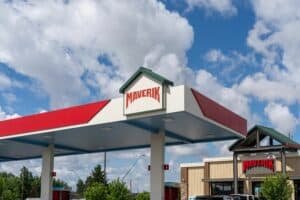
iStock.com/jetcityimage
August 6, 2025
How Can Brands Attract New Customers Without Alienating Existing Ones?
A new book, “The Growth Dilemma,” offers a number of solutions to avoid conflicts when brands’ investing in acquiring new kinds of customers turn off their loyal bases, including “firing” the newer customer segment.
The book was written by marketing professors Ryan Hamilton and Annie Wilson of Emory University’s Goizueta Business School and Wharton School of the University of Pennsylvania, respectively.
In a Harvard Business Review article, the co-authors suggested that the risks around such conflicts are particularly high where introducing a new customer segment challenges the brand’s perceived meaning — or makes it seem less exclusive. However, reaching new customers that may have different needs, values, and preferences than older ones always carries risks.
“Anytime a brand grows—or tries to grow—by attracting new segments, it risks creating conflict with the old ones,” wrote the authors. “And the larger a brand gets, the more heterogeneous its customers will become, increasing the likelihood that tensions will arise.”
Three solutions were offered to avoid or reduce such conflicts.
Building Walls Can Help Resolve Conflict Between New Customers and Existing Ones
The most common approach for resolving conflicts is to create separate communities that can court each new segment independently, although the authors note that doing so is more costly.
One method involves employing different communications to different audiences, such as The North Face having its main Instagram account geared toward its core outdoor enthusiasts, while other accounts focus on specific outdoor sports — such as climbing and snow sports — and still others on the brand’s fashion fans.
Sub-brands can also reduce customer conflicts. The authors note that Timberland developed the sub-brand, Timberland Pro, for blue collar workers to reduce friction in messaging to fashionistas. On the distribution front, an example cited was Starbucks opening drive-through locations to cater to its newer on-the-go commuter customers. In doing so, the company reduced long lines at standard stores which irritated its traditional customers, many of whom valued the relaxed “third place” proposition.
Creating Hierarchies Also Key
Establishing hierarchies, whether by developing sub-brands or through pricing and availability, can help overcome conflicts within “leader-follower segments,” or where higher-status segments — whether because they’re “cooler, more expert, or more authentic” — attract followers “who want to emulate them.”
An example offered was Levi’s, which serves core customers under its flagship Levi’s brand iconic red tab on waistbands and pockets, but also offers more-affordable jeans without the red tab — as well as premium Japanese selvedge denims with blue tabs on the pocket for even higher aspirational status.
Firing a Segment May Be Necessary
Some customers segments are “incompatible,” wherein each segment influences each other and derives different kinds of value from the brand that make them “prone to conflict.”
Examples given of incompatible customer groups included Kohl’s losing much of its core customer base — it removed many of the “low-priced items they wanted” as Sephora shops and products, as well as other trendy items, were added to attract younger and less price-sensitive customers.
The study also cited Tiffany’s move in the ’90s to raise prices on silver jewelry after it became known as “the go-to brand for gifts of silver baubles by high school sweethearts,” threatening its relationship with upscale customers.
The authors wrote, “If the continued use of a brand by one segment makes it difficult for the brand to attract or retain other, more-valuable customers, it’s often wise to nudge that segment toward the door.”
Discussion Questions
What advice do you have for brands or retailers around avoiding conflicts with old customer segments when attracting new ones?
What do you think about the suggestions offered in the article around creating separate communities and hierarchies, or even “firing” certain customer segments to reduce customer friction?
Poll
BrainTrust
Gene Detroyer
Professor, International Business, Guizhou University of Finance & Economics and University of Sanya, China.
Mohamed Amer, PhD
CEO & Strategic Board Advisor, Strategy Doctor
Gary Sankary
Retail Industry Strategy, Esri
Recent Discussions







Brands first need to work out where the value is for them, and prioritize those customer cohorts. However, is possible to serve a diverse range of customers through sub-branding and careful segmentation. This is especially relevant to chains like department stores as most need wide audiences to make the economics of their business model work. The trick is, however, to have very clear parts of the range with distinct handwriting and storytelling – not to let the assortment merge into one, indistinct muddle.
I also disagree on the observations made about Kohl’s. It has lost customers because the offer is confusing, messy and muddled. It isn’t simply about low prices and it’s certainly not about adding Sephora. It’s about a failure to offer value for money and a failure to be interesting and engaging. And that, in itself arises, from a more fundamental issue: Kohl’s has lost sight of who the customer is and what they actually want.
Kohl’s problems go much deeper than the authors imply. However, in general, the challenge is turning tension into brand advantage. The authors’ solutions—walls, hierarchies, firing segments—miss the deeper issue: brands don’t understand what customers actually buy. They’re buying identity, status, belonging, and meaning, not just products. Three tactical alternatives:
1) Take a brand archaeology first approach. Before expansion, map the emotional jobs your brand performs through customer observation, not surveys. What rituals do loyal customers create around your brand?
2) Layer emotional unifiers over demographic realities. Use demographics for execution (media, channels, inventory), but lead the expansion strategy with shared tensions. Patagonia attracts climbers and suburbanites because both wrestle with authentic living, and then delivers through age-appropriate channels. Nike serves people pushing personal limits across all demographics.
3) Create adaptive value systems by developing experiences that respond to customer states, not segments. Amazon Prime serves the same person’s bargain-hunting and luxury moods without conflict.
It isn’t necessary, nor efficient to create separate communities for brand expansions or variations. Doing so requires completely separate but equal budgets, which can be costly, confusing within, and confuse original customer base, especially if the brand carries the same name that it did before.
A brand should develop marketing strategies that appeal to both new and existing customers. In order to accomplish this, personalized experiences and tailored products can be provided to meet the needs of diverse customer segments. Furthermore, it is important to maintain open lines of communication and obtain feedback from all segments of the customer community in order to ensure that all changes are accepted and welcomed.
One’s customer is much closer to the perception of the product than the actual customer. The customers of brands or retailers change over time. It must be recognized that the demographics of the customer evolve, they will churn. Don’t worry about alienation (they won’t be alienated), worry about them moving on, no matter what you do.
Missing in this article- what happens when your customer segments change their preferences, or the market shifts due to changing conditions, new competition, or the development and adoption of new channels, which impacts your market share. Retail is a dynamic business; the market changes are coming faster and faster. Winners in the industry strike a balance between their brand promise and the preferences of their core market segments.
These 2 words can be a murky stumbling block for corporate side: “brand promise”
It’s not the “+ Sephora” or “+ Amazon returns”
Where are the data analytics in this study…without those elements of truth, everything else is speculation. If information can be segmented to support the “good, better, best” or customer preference lanes – hierarchies as they’re referred to here – then the right decisions can be made. Data loves instinct but without data, instincts can be hollow.
A retailer’s whole job is to understand the larger market dynamic and at least keep up with shifting trends if not stay ahead of them. It’s not a question of ‘if’ they will lose non-evolving customers, it’s a question of how many and at what pace. A couple of brand reinventions come to mind. Banana Republic and Abercrombie & Fitch. Remember the original versions? Both evolved KNOWING they were going to lose certain customer segments. They absolutely were prepared to lose certain customer segments…all in the name of attracting a larger, present day and longer term future customer cohort.
The conflict with old customer segments cannot be avoided. It has to be recognized, embraced, and managed as foundational to the whole process. That’s the job. Avoid it at your peril.